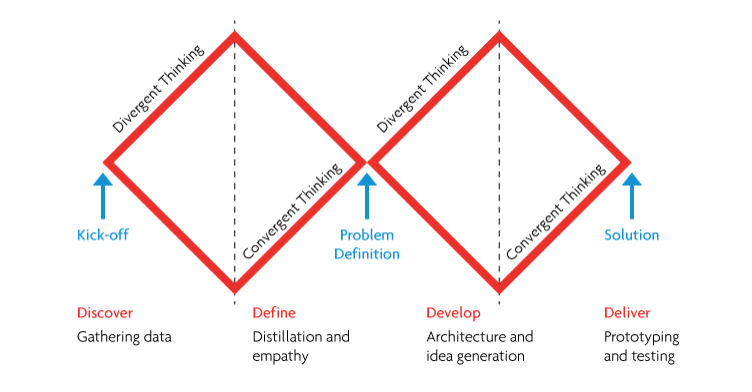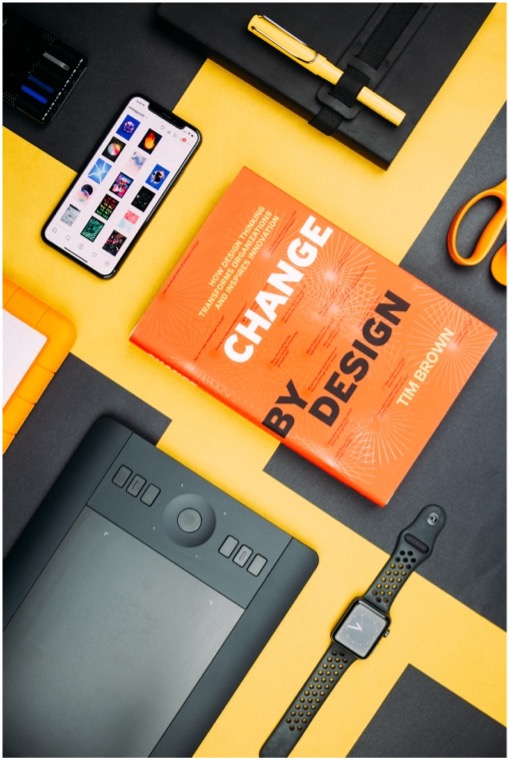How can we enable human-centered service innovation? A service design perspective (Story 2)
By Cecilia Lee (LI) and Utpal Mangla (LI)
In our previous blog entry, we discussed the growing momentum of academics’ efforts in trying to understand an intricate relationship between service design and human-centered service innovation. Despite the growing theoretical contributions to understanding the relationship between service design and human-centered service innovation, we pointed out a lack of solid groundwork on how service design is defined and used by industry practitioners. As a result, service design is interpreted and understood in multiple different meanings and approaches amongst industry practitioners and organizations, and it has caused some confusion that has become the source of the misconception of service design and its role as an enabler for human-centered service innovation.
The purpose of the second blog entry is to introduce several actions industry practitioners could take in order to more effectively leverage service design to enable human-centered service innovation. We mentioned in our first blog that many organizations have their own way of conceptualizing and operationalizing service design, whether it be service design as a human-centered problem-solving process or process design derived from the information technology infrastructure library (ITIL).
In our view, service design can easily be defined and explained by the Double Diamond Design Framework, which was introduced by the British Design Council in the early 2000s (Ball, 2019). The Double Diamond Design Framework in Figure 1. is the outcome of the British Design Council’s years of efforts in exploring the ways to explain a design process to non-designer audiences in a simple language. The framework describes the design process in four distinct phases: Discover, Define, Develop, and Deliver. The purpose of the first two phases, Discover and Define, represented by the first diamond is to identify and understand the nature of the problem, whilst the purpose of the latter two phases, Develop and Deliver, is to explore the solutions and experiment with them.
Figure 1: The Double Diamond Design Framework

Our intention is not to promote or argue that the Double Diamond Framework is perfect. We are aware of the limitations of this framework, such as its oversimplified approach to understanding the complexity of a service system, or, more recently, a smart service system. However, given a wider reach and adoption of the framework by both design and technology communities, we believe that we can use this framework as an initial stepping stone to illustrate how service design could enable human-centered service innovation. Following the design process outlined by the Double Diamond Framework, we would like to introduce three specific actions any industry practitioners can take to better leverage service design as a pathway to human-centered service innovation.
First, do not assume you know the problem. Learn to explore the problem space and gather sufficient data first. Discovering and defining the problems from multiple angles would help you deepen your understanding of your user and customer pain points and frustration from your customer’s perspective. By gathering data and defining the problems customers face, you would be able to identify the areas where customers experience frictions with your service offerings more accurately.
Second, explore how to effectively reconfigure people and technology within your business unit to deliver the best possible user and customer experiences. During the first diamond phase, you would have generated a good amount of user and customer insights. The insights would help you explore how you could best reconfigure resources to enhance user and customer experience.
Finally, repeat this exercise for continuous learning and iteration. This end-to-end design process would continuously challenge your status quo, push you out of your comfort zone, and encourage blue-sky thinking that may lead to human-centered innovation.
Although there is no clear consensus on how service design is understood and leveraged as an enabler for human-centered service innovation amongst industry practitioners, there are numerous examples, which illustrate how service design has been a pathway to human-centered innovation.
One of the real-life examples of how service design is enabling human-centered service innovation is through the use of digital virtual assistants across many sectors. Organizations are leveraging the power of AI-enabled assistants to bridge the gap by providing a human-centric experience. As technology advances at a phenomenal rate, the “gap” is bridging fast, and customer satisfaction rates are improving.
The key is to use them for solving the right problems. A contact center is a classic example where digital virtual assistants have taken significant prominence and have enabled call center workers to move up the stack to handle complex tasks. Initially, assistants started with answering simple and general informational queries. As technology has advanced, it has gradually moved from simple queries to complex short-tail and early stages of long-tail questions. With the rapid advancement in system integration technology and AI capabilities, many complex long-tail queries can now be handled by a virtual assistant. Examples include applying for loans and checking your billing usage and financial transactions. The next level of advancement is layering in voice capabilities. With the advancement of natural language capabilities, many organizations have started deploying those capabilities.
Organizations deploying AI assistants can see the positive benefits in customer satisfaction surveys. They can re-deploy their staff to handle complex queries, manage operational costs effectively during the current inflationary period, and increase revenue by providing cross-sell or up-sell capabilities through assistants. Also, more importantly, customers’ wait time for reaching the contact center has gone down with the integration of a digital virtual assistant that can handle simple mundane queries for customers.
As this example illustrates, the relationship between service design and human-centered service innovation is already well observed in service innovation practice, but because of the lack of solid groundwork on the conceptualization and the operationalization of service design by industry practitioners, the service design process that is widely accepted and recognized by the community of service industry practitioners has been missing.
This gap can be easily filled by the Double Diamond Design Framework, which is the design process that has been codified for non-designer audiences. Three specific actions guided by this framework, which we have introduced above can be a first step towards bringing consensus on what service design stands for and how it could be leveraged as an enabler for human-centered service innovation.
References
Ball, J. (2019). The Double Diamond: A universally accepted depiction of the design process. Retrieved from https://www.designcouncil.org.uk/our-work/news-opinion/double-diamond-universally-accepted-depiction-design-process/

